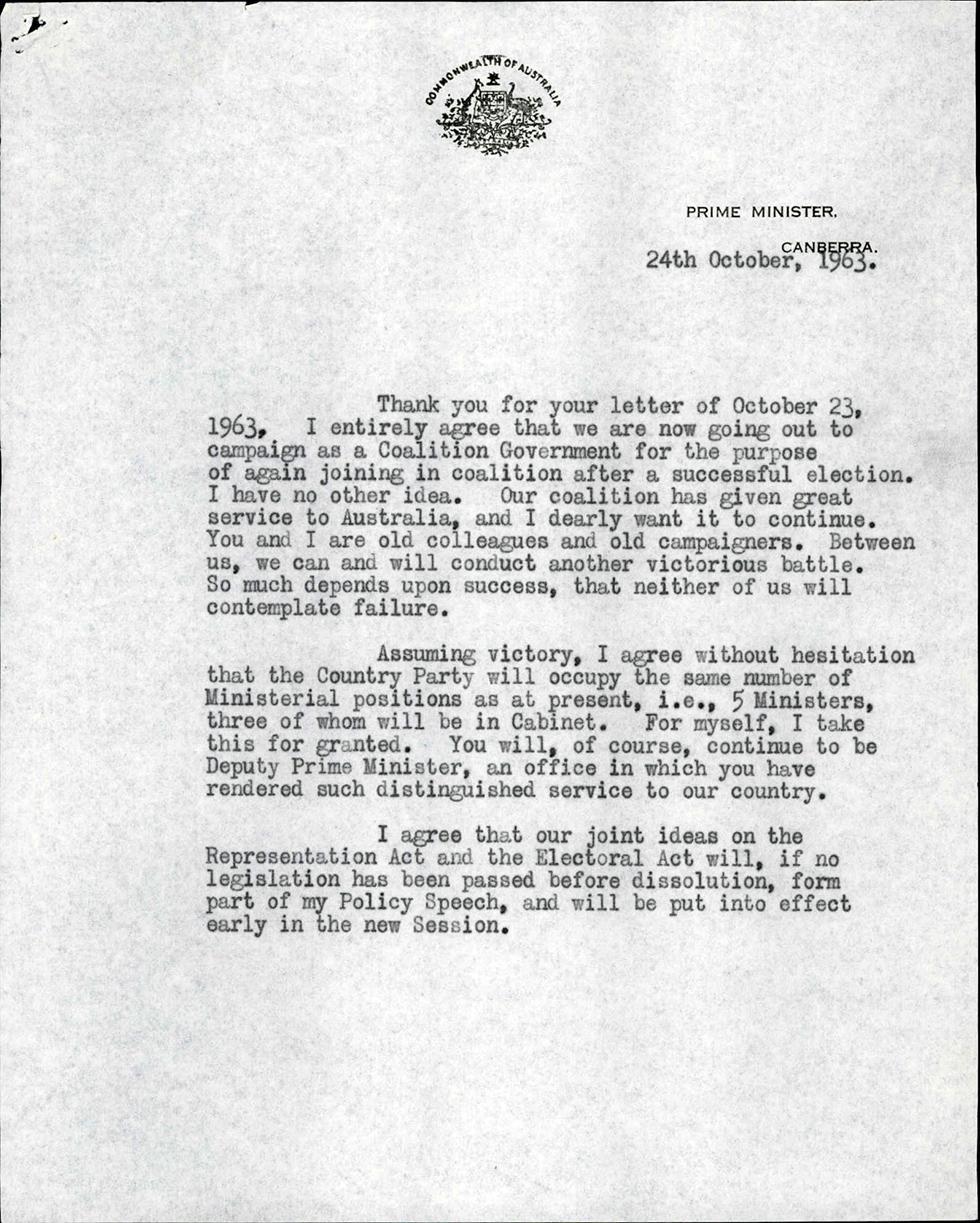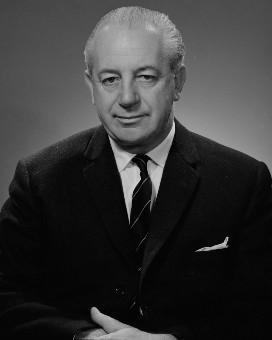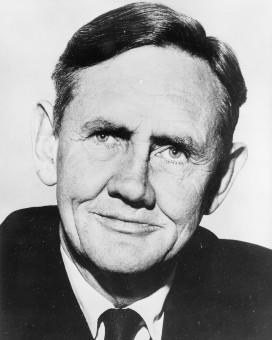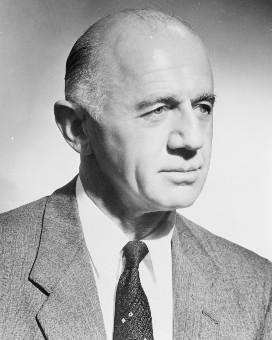John McEwen contested 14 federal elections from 1934, when he won the seat of Echuca, to 1969 when he contested the seat of Murray for the last time. From 1937 to 1949, he held the seat of Indi in northern Victoria. After this electorate was divided in the 1949 election, he represented the new electorate of Murray for the next 20 years.

In 1963, Robert Menzies wrote to John McEwen 'Our coalition has given great service to Australia, and I dearly want it to continue. You and I are old colleagues and old campaigners ... There never has been such a partnership as this in the political history of Australia'. NAA: M2576, 1, p.116
15 September 1934
McEwen won the northern Victoria seat of Echuca, one of 14 Country Party members returned. The Lyons government remained in office with 28 seats and 5 won by South Australia’s Liberal and Country League. Labor won 18 seats and ‘Lang Labor’ 9, in the House of Representatives. In the Senate, the United Australia Party won 16 seats and the Country Party 2 seats.
23 October 1937
McEwen stood for the northern Victorian seat of Indi in this election, and was one of 16 Country Party members returned to the coalition government led by Joseph Lyons. Lyons’ United Australia Party won 28 seats in the House of Representatives, and 1 seat was held by an ‘Independent UAP’ candidate. The Labor Party, led by John Curtin after James Scullin’s retirement, won 29 seats. In the Senate, Labor won 16 seats, while the United Australia Party won 3.
21 September 1940
The United Australia Party, led by Robert Menzies after the death of Joseph Lyons in April 1939, narrowly retained government with the help of the Country Party. The United Australia Party won only 23 seats (and lost one when AW Cole declared himself an Independent) to Labor’s 32. McEwen held Indi, one of the Country Party’s 14 seats. Lang Labor won 4 seats and there was 1 Independent. The United Australia Party and Country Party won 16 Senate seats and Labor 3.
On 28 August, Menzies was replaced as United Australia Party leader and Country Party leader Arthur Fadden became Prime Minister. Fadden was unable to retain majority support in the House of Representatives and, on 7 October 1941, John Curtin became Prime Minister.
21 August 1943
Curtin won a sweeping victory at this wartime election. McEwen held Indi, one of 7 Country Party seats, with 3 Country National Party, 1 Liberal Country Party, 1 Queensland Country Party, and 1 Independent in the House of Representatives. The United Australia Party won only 12 seats to Labor’s 49. Labor won all 19 Senate seats contested.
28 September 1946
The Labor government, led by Ben Chifley after the death of John Curtin, won 43 House of Representatives seats. The Country Party won 11 seats, including McEwen’s seat of Indi, and Robert Menzies’ new Liberal Party won 15 seats. The Liberal and Country League won 2 seats, the Victorian Liberal Country Party 1, Lang Labor 1 and there was 1 Independent. In the Senate, the Liberal and Country Party alliance won 3 seats to Labor’s 16.
10 December 1949
The Liberal Party led by Robert Menzies won government with 55 seats in the House of Representatives, to the Country Party’s 19 and Labor’s 47. In 1949, the size of the House of Representatives was increased from 75 to 121 seats. The seat of Indi was divided into 2 in the redistribution, and McEwen was returned for the western section centred on the town of Echuca and bordered by the River Murray on the north. The Senate increased from 36 to 60 seats and 42 Senate seats were contested. The coalition won 23 and Labor 19.
28 April 1951
This was a double dissolution election, the first since 1914. The Menzies government was returned with a reduced majority in the House of Representatives, but with control of the Senate. In the House, the Liberal Party won 52 seats to the Labor Party's 54, with the Country Party winning 17 seats, including McEwen’s seat of Murray. Of the 60 Senate seats, the Coalition won 32, Labor 28.
29 May 1954
In the aftermath of the defection of Soviet embassy officials Vladimir and Evdokia Petrov the month before, this House of Representatives election returned Robert Menzies’ coalition government. The Liberal Party won 47 seats, the Country Party 17 seats and Labor 57 seats in the House. McEwen was unopposed in his seat of Murray.
10 December 1955
After the formation of an anti-Communist grouping split the Labor Party early in 1955, Prime Minister Robert Menzies obtained an early dissolution of parliament on the grounds of bringing together the elections for both Houses. The coalition was returned with an increased majority, with 57 Liberal and 18 Country Party seats to 47 Labor seats in the House of Representatives. McEwen was returned for Murray. In the half-Senate election, of the 30 seats contested, the coalition won 16, Labor 12, Anti-Communist Labor 1 and Country-Western Australia 1.
22 November 1958
John McEwen replaced Arthur Fadden as leader of the Country Party and deputy Prime Minister in March 1958. At the November federal election, the Menzies–McEwen coalition was returned with a substantial majority. In the House of Representatives, the Liberal Party won 58 seats, the Country Party 19 and Labor 45. Of the 32 Senate seats contested, the coalition and Labor each won 15. The other 2 seats were won by the Democratic Labor Party and Country-Western Australia. The 1958 election campaign was the first where television was widely used by the parties.
9 December 1961
At this election the Menzies–McEwen coalition narrowly retained government, with 45 Liberal and 17 Country Party seats to Labor’s 60. The coalition thus governed by a majority of 1 seat after a Speaker was elected in the House of Representatives. Of the 31 Senate seats contested at this election, the coalition won 15 and Labor 14, with 1 Country-Western Australia and 1 ‘other’.
30 November 1963
RG Menzies called this House of Representatives election early, and obtained an improved majority with 52 House of Representatives seats won by the Liberal Party, 20 by the Country Party and 50 by Labor. McEwen retained Murray.
26 November 1966
The Holt–McEwen coalition government was returned, with 61 Liberal Party seats and 21 Country Party seats, including McEwen’s seat of Murray. The Labor Party won 41 seats and there was 1 Independent in this House of Representatives election.
25 October 1969
The Gorton–McEwen coalition government was returned at this House of Representatives election, though with a diminished majority. The Liberal Party won 46 seats and the Country Party 20, with Labor increasing its seats to 59. The Democratic Labor Party and Australia Party also contested this election, without success. This was McEwen’s last election. He was again returned for Murray, but retired from parliament in February 1971.
Sources
These brief election results relate only to this Prime Minister. They are drawn from the online sources below, where further information can be found.
Australian Electoral Commission: Election results
University of Western Australia: Australian Government and Politics Database





